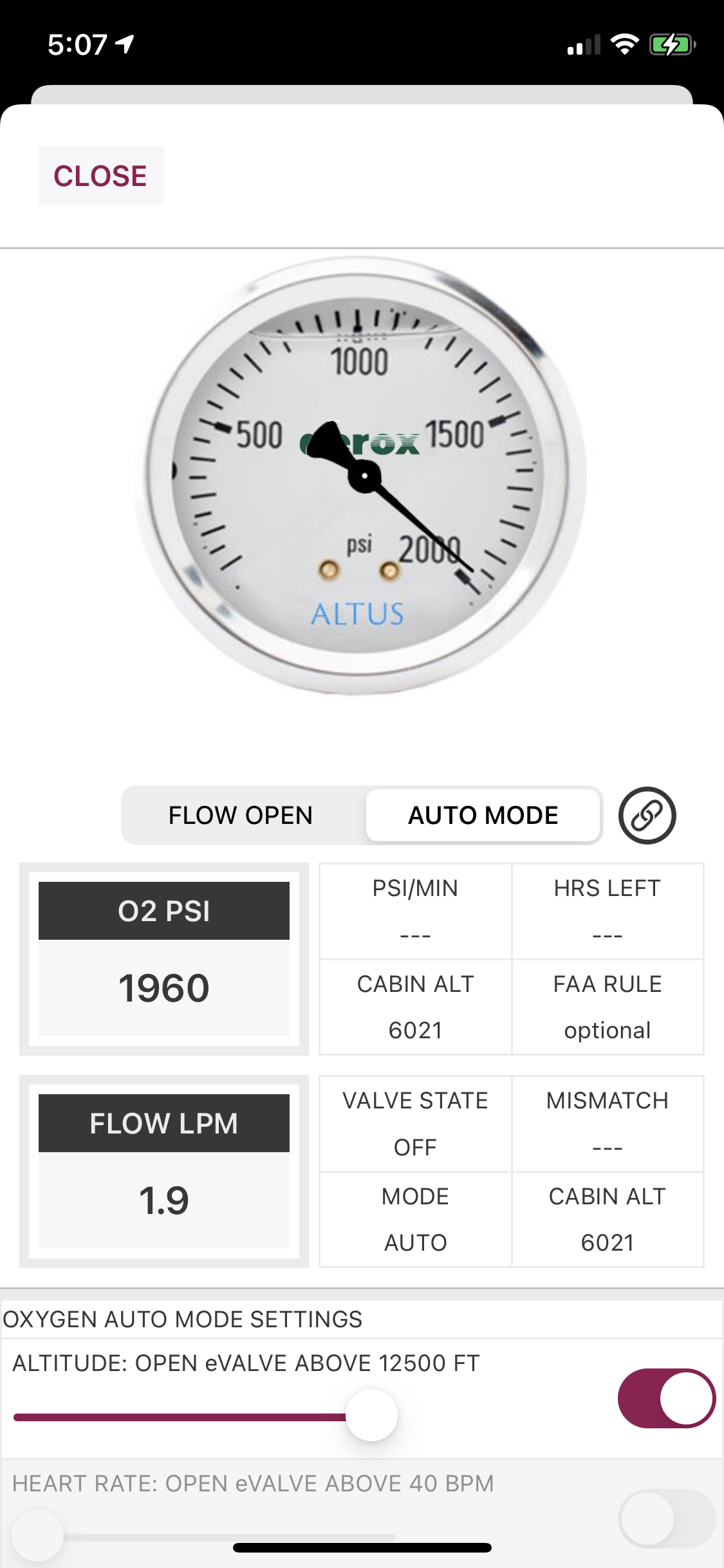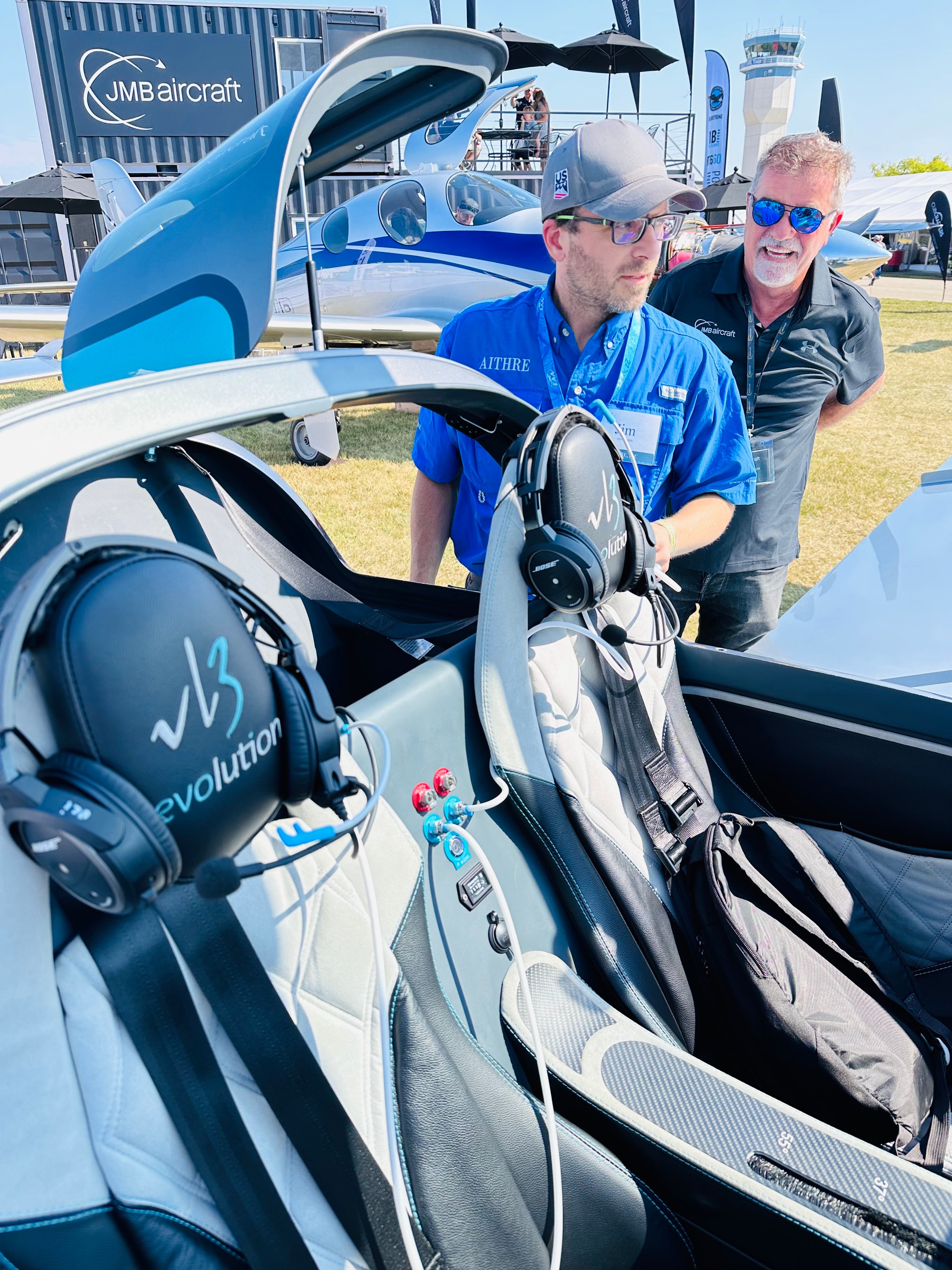This week we took the Aithre bottles to 15k MSL pressure altitude in our RV-10 experimental aircraft. The RV loves to cruise at around 14-16k MSL. While we've gotten it up to 17.5k MSL, the plane is sluggish and just above the stall speed at that altitude. But, because we are always at 15k on cruise, I wanted to know how our Aithre ultra portable bottles would perform.
We have preset the flow rate on these bottles to 0.5 LPM to remove any cumbersome flow rate calculations and adjustments. We've also adopted a very low profile single prong cannula that is very comfortable and fits in only a single nostril. These two features are convenient, but we wanted to test out whether there was any issues with maintaining a healthy SPO2 at these relatively high unpressurized flight altitudes.
The results were awesome. Using our companion always on Illyrian pulse oximeter we were able to monitor SPO2 during takeoff, climb, and the entirety of the flight. At 5k MSL on takeoff from KSUN, my SPO2 was 94% and decreased slowly to 90-91% SPO2 at 15k MSL. I never dropped below 90% despite the fixed flow rate and the single prong cannula. Further, the bottle 2000 PSI lasted for the duration of the flight from KSUN to KBOI and back (about 1.5 hrs), with over 500 PSI remaining.
This is an exciting result because it provides some preliminary confirmation that the Aithre bottle is an option for convenient oxygen access and backup during flights up to 15k MSL. We will be doing further testing with the dual prong cannula and with the Mountain High pulse demand option and will share those results when we have them.








